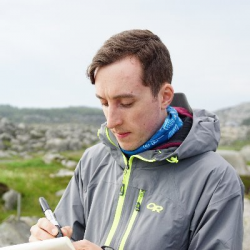His research is focused on modelling and observing the flow of ice and water in ice sheets and glaciers. More details can be found on his website. His role on GHOST is to co-lead the collection and analysis of phase-sensitive radar data to better understand how Thwaites Glacier flows over its bed.
On International Women’s Day, 8 March 2021, we mark and celebrate the women working as part of the International Thwaites Glacier Collaboration (ITGC).
Koellner 2019 515:200-208
Koellner, S., B. R. Parizek, R. B. Alley, A. Muto, and N. Holschuh. 2019. The impact of spatially-variable basal properties on outlet glacier flow. Earth and Planetary Science Letters 515: 200-208.
Alley 2019 60(80): 1-13
Alley, R., K. Cuffey, and L. Zoet. 2019. Glacial erosion: Status and outlook. Annals of Glaciology 60(80): 1-13.
Post 2019 5:12
Post, E., R. B. Alley, T. R. Christensen, M. Macias-Fauria, B. C. Forbes, M. N. Gooseff, A Iler, J. T. Kerby, K. L. Laidre, M. E. Mann, J. Olofsson, J. C. Stroeve, F. Ulmer, R. A. Virginia, and M. Wang. 2019. The polar regions in a 2°C warmer world. Science Advances 5:12.
Riverman 2019 60(80): 91-99
Riverman, K., S. Anandakrishnan, R. Alley, N. Holschuh, C. Dow, A. Muto, B. Parizek, K. Christianson, and L. Peters. 2019. Wet subglacial bedforms of the NE Greenland Ice Stream shear margins. Annals of Glaciology 60(80), 91-99.
Holschuh 2020 48 (3): 268-272
Holschuh, N., K. Christianson, J. Paden, R.B. Alley, and S. Anandakrishnan. 2020. Linking postglacial landscapes to glacier dynamics using swath radar at Thwaites Glacier, Antarctica. Geology 48 (3): 268–272.
Hoffman 2020: 14, 4603-4609
Hoffman, A. O., K. Christianson, D. Shapero, B. E. Smith, and I. Joughin. 2020. Brief communication: Heterogenous thinning and subglacial lake activity on Thwaites Glacier, West Antarctica. The Cryosphere 14, 4603–4609.
Alley 2019 363:342-344
Alley, R. B., K. A. Emanuel, and F. Zhang. 2019. Advances in weather prediction. Science 363: 342-344.







